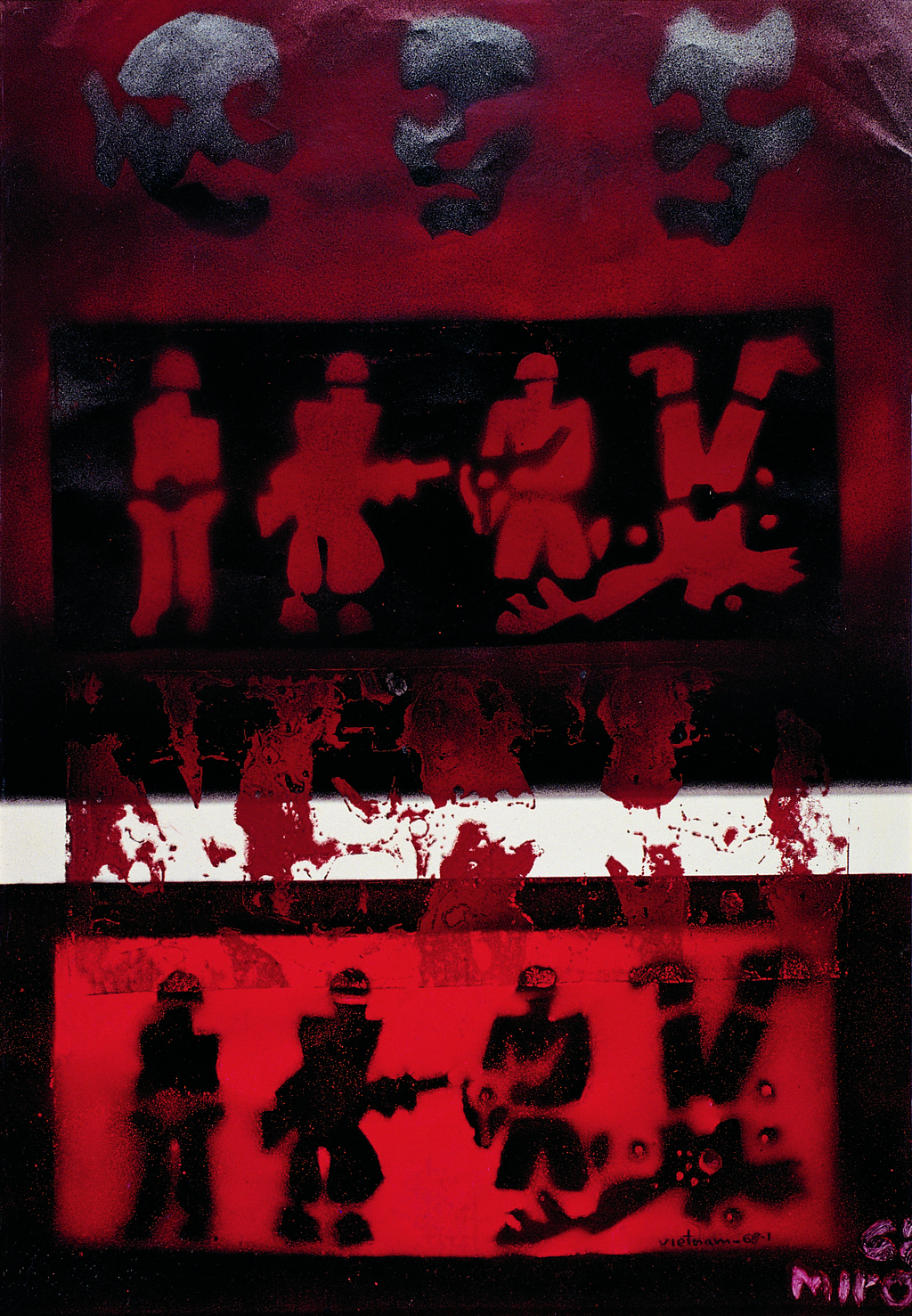Vietnam
The worldwide furore over the ravages of the Vietnam War is manifest in this work by Antoni Miró. The form itself is based on a sub-series centring on this subject, which is interwoven with the more general critique of American imperialism seen in El Dòlar (The Dollar) series.
The work uses markedly expressionist language to allude to an execution by firing squad. Red and black, the colours of war, death and blood, flood the canvas apart from a horizontal white strip separating the bottom two thirds. This work has a clear sequential character, in its entirety and in each of the two fragments containing most of the visual information. The scene in which American soldiers shoot, with more bullets than needed, a man of the opposing side can be reconstructed over time, thanks to the multiple representation, in different positions and at different times, of the actors.
The repetition of the scene, in each of the two areas, in which the colours of the background and the figures are reversed, even though the artist uses the same airbrush template, depicts an insistence on the temporal condition, in an almost filmic fashion, as if they were two photograms close to each other. The instant of the shots is noticeable and is signalled by the white strip between the panels. The strip is smeared with red brush strokes, alluding to blood from the corpse.
Miró uses a mixed technique, which combines painting and airbrushing, to obtain metallic effects on backgrounds that are flat in some cases and in others have a transient quality given the use of gradients.
The informational density, which is concentrated at the bottom, is complemented by the observant presence, from outside and above, of three faces representing the conspicuous powers instigating conflict.
The artist has always sought to reflect key issues of the time, eschewing neutrality. Aguilera Cerni was right to stress that the main thing about the chronicle is its focus on shocking events and that the critique is a moral judgement whose purpose is to “prick people’s consciences”. This critic, writing in the early 1970s, highlighted the fact that for Antoni Miró, “Art - a historical product - is an instrument for transforming history”; a transformation that, as Corredor explained, is sorely needed because “the world, for the artist, is all wrong”.
Santiago Pastor Vila
